02:02
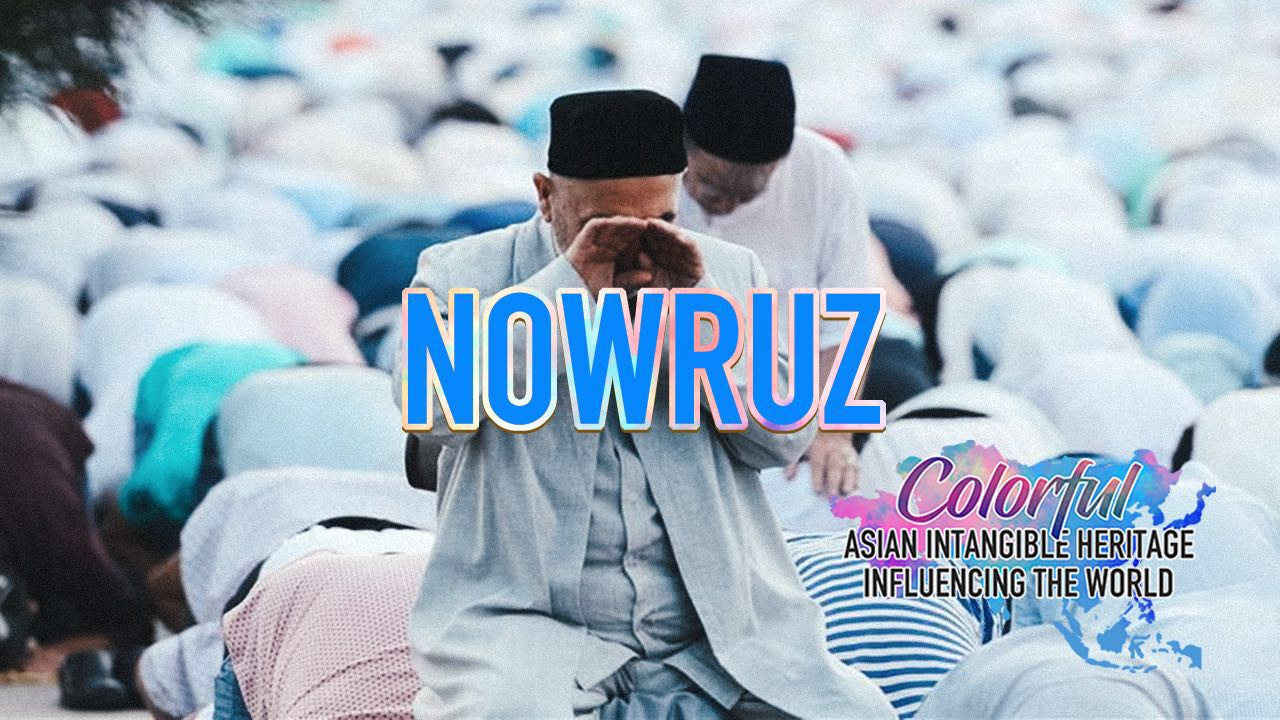
Persian New Year, or Nowruz, is celebrated every March by 300 million people across the world, from the Balkans, the Black Sea Basin, the Caucasus, to Central Asia, the Middle East and elsewhere.
Estimated to have a history of 3,000 years, Nowruz was inscribed in the intangible cultural heritage list by UNESCO in 2016.
What is Nowruz?
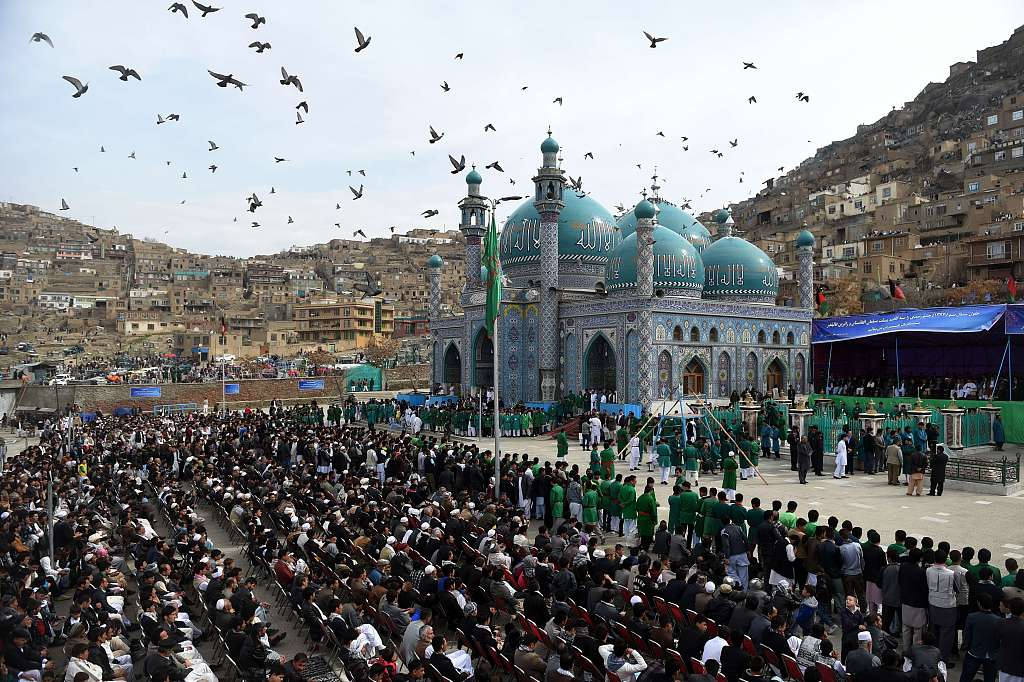
Afghans gather during proceedings at the Sakhi shrine for Nowruz festivities as they mark the Afghan New Year in Kabul, March 21, 2015. /VCG Photo
Afghans gather during proceedings at the Sakhi shrine for Nowruz festivities as they mark the Afghan New Year in Kabul, March 21, 2015. /VCG Photo
As the first day of the first month in the Iranian calendar, Nowruz, literally means "new day," and coincides with the vernal equinox, which marks the beginning of spring in the Northern Hemisphere and the renewal of nature.
It is said that Nowruz was rooted in Zoroastrianism, an ancient Persian religion. Nowadays, it's much more of a universal celebration of new beginnings rather than a religious holiday.
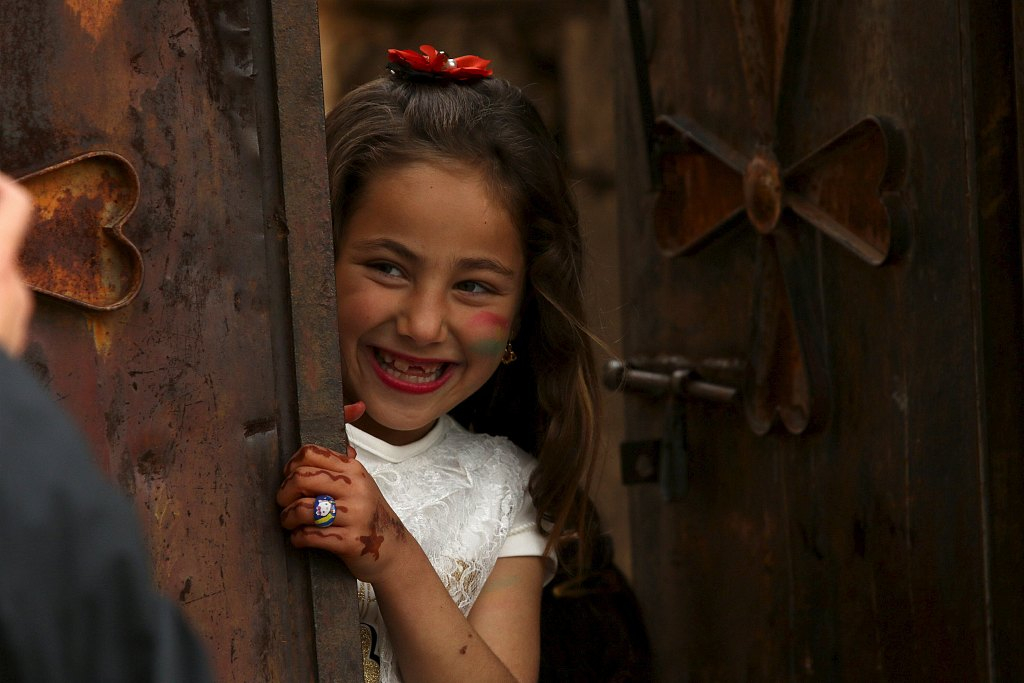
A girl celebrates Nowruz Day, a festival marking spring and the new year, in Akra, Iraq, March 20, 2016. /VCG Photo
A girl celebrates Nowruz Day, a festival marking spring and the new year, in Akra, Iraq, March 20, 2016. /VCG Photo
The festival usually lasts a couple of weeks around the day of Nowruz, and features activities like cleaning, new clothes, family visits, and various rituals for good luck in the coming year.
Preparations ahead of Nowruz
People in different countries may celebrate it differently. Take Iran for example, the prelude of new year starts weeks before the actual day. You'll likely find Persian rugs hanging outside days before the start of the festival.
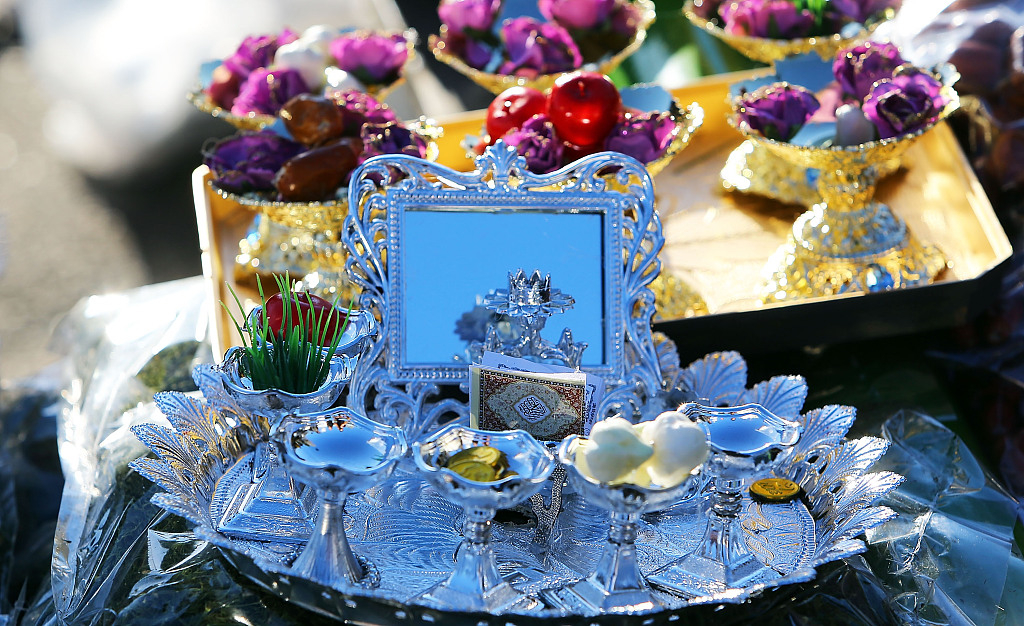
A "Haft Sin" is set out on a small table to celebrate Nowruz, the Persian New Year, in Tehran, Iran, March 20, 2014. /VCG Photo
A "Haft Sin" is set out on a small table to celebrate Nowruz, the Persian New Year, in Tehran, Iran, March 20, 2014. /VCG Photo
Many households will prepare a "Haft-Sin" table, which refers to seven symbolic items starting with the Farsi letter "s" that embed new year with their hopes. They usually include sabzeh (a kind of sprout or grass growing in a dish) symbolizing rebirth, senjed (dried fruit) for love, sib (apple) for beauty, seer (garlic) for health, samanu (sweet pudding) for wealth, serkeh (vinegar) for patience, and sumac (a Persian spice) for sunrise of a new day.
Besides the above seven foundations, the "Haft-Sin" table may also include a mirror symbolizing reflection, painted eggs for fertility, live goldfish for new life, and coins for prosperity. A Muslim family may add a Quran, symbolizing wisdom.
On the last Tuesday before Norwuz, known as Charshanbe Suri, or "Eve of Red Wednesday," people gather in an open ground and jump over bonfires, repeating the phrase, "Give me your beautiful red color and take back my sickly pallor!"
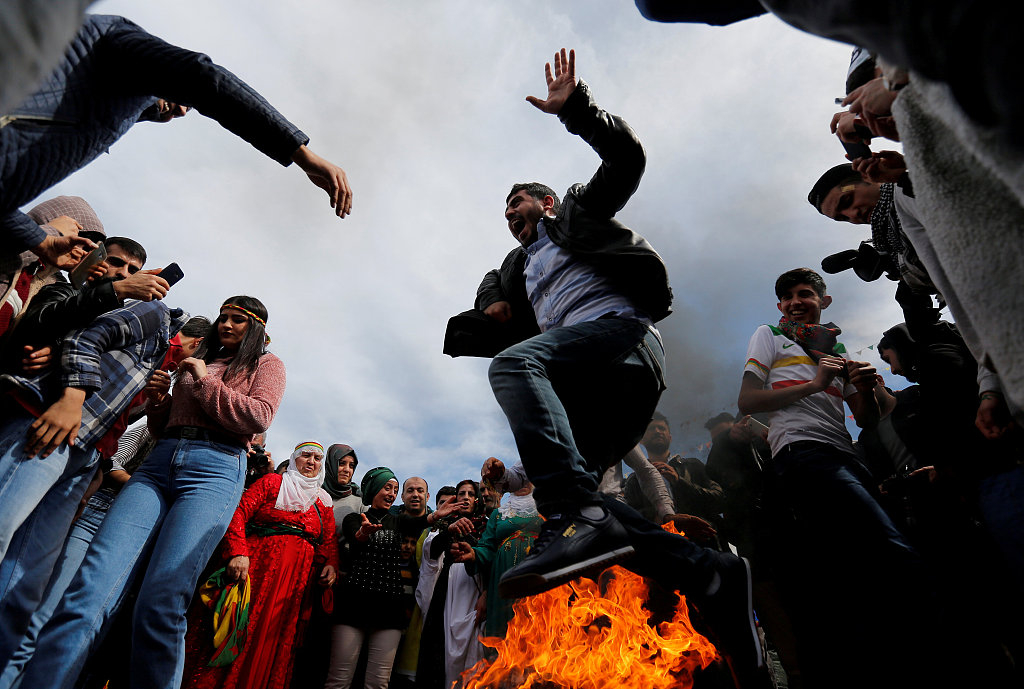
A man jumps over a bonfire during a gathering to celebrate Nowruz, which marks the arrival of spring and the new year, in Istanbul, Turkey, March 21, 2018. /VCG Photo
A man jumps over a bonfire during a gathering to celebrate Nowruz, which marks the arrival of spring and the new year, in Istanbul, Turkey, March 21, 2018. /VCG Photo
The New Year celebration
The arrival of Nowruz kicks off the 13-day celebration, with family members gathering at the homes of elders. Children bang on cooking pots with spoons for sweets from others and they also receive money gifts from adults.

Persian lamb, eggplant and freekeh stoup. /VCG Photo
Persian lamb, eggplant and freekeh stoup. /VCG Photo
Among dishes specific to Nowruz, Sabzi Polo Mahi (herbed rice with fish) , Kuku Sabzi (Persian herb baked omelet), and Fesenjan (chicken stew with walnut and pomegranate sauce) are can't-miss food shared by family members, friends and neighbors.
On the final day, celebrators go out for a picnic and float sabzeh (the sprout growing on the "Haft-Sin" table) away in flowing waters to release the old and usher the new.
Recognizing Nowruz's contribution to "cultural diversity and friendship among peoples and different communities," the United Nations proclaimed the "International Day of Nowruz" in 2010.
Video Editor: Wang Dawei
Designer: Fan Chenxiao
Animation and special effect: Pan Yufei
Producer: Wen Yaru
Chief Editor: Lin Dongwei
Supervisor: Pang Xinhua







